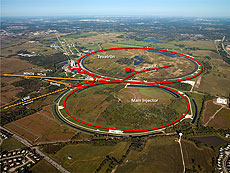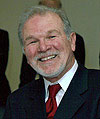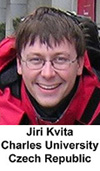Have a safe day!
Thursday, Jan. 14
2:30 p.m.
Theoretical Physics Seminar - Curia II
Speaker: Brooks Thomas, University of Arizona
Title: Semper FI?: Supercurrents, R-Symmetries, and the Status of Fayet-Iliopoulos Terms in Supergravity
3:30 p.m.
DIRECTOR'S COFFEE BREAK - 2nd Flr X-Over
THERE WILL BE NO ACCELERATOR PHYSICS AND TECHNOLOGY SEMINAR TODAY
Friday, Jan. 15
3:30 p.m.
DIRECTOR'S COFFEE BREAK - 2nd Flr X-Over
THERE WILL BE NO JOINT EXPERIMENTAL-THEORETICAL PHYSICS SEMINAR THIS WEEK
Sunday, Jan. 17
2:30 p.m.
Gallery Chamber Series - 2nd Flr Art Gallery
The Chicago Chamber Musicians
Tickets: $17
Click here for NALCAL,
a weekly calendar with links to additional information.
Upcoming conferences |
|
For information about H1N1, visit Fermilab's flu information site.
|
|
Thursday, Jan. 14
- Breakfast: Apple sticks
- Minnesota wild rice w/ chicken
- Tuna melt on nine-grain
- Italian meatloaf
- Chicken casserole
- Buffalo krispy chicken wrap
- Assorted sliced pizza
- Mandarin chicken
Wilson Hall Cafe Menu |
|
Thursday, Jan. 14
Dinner
- Closed
Wednesday, Jan. 20
Lunch
- Penne pasta w/ spinach & mushrooms in Alfredo sauce
- Green salad
- Italian cream cake
Chez Leon Menu
Call x3524 to make your reservation.
|
|
|
Ground-breaking neutrino R&D gets government boost
 |
How the LBNE would fit into the Fermilab accelerator complex. |
Work toward the world’s most intense long-distance neutrino beam received key government approval last week, invigorating US and global collaborators.
The Long Baseline Neutrino Experiment passed the first Department of Energy approval stage Friday, Jan. 8, when it received Critical Decision-0. This designation cements the DOE’s support for the need and physics goals of the experiment. In a field where researchers work on multiple projects at once, the designation also helps laboratories prioritize efforts.
Read more
-- Tona Kunz
|
Tyler Przybylek appointed URA general counsel
 |
Tyler Przybylek
|
Tyler Przybylek, who will join URA as general counsel on Jan. 18, brings with him a background of long and distinguished service as a legal counsel in the Department of Energy. He succeeds Bill Schmidt, who will retire as URA and FRA general counsel on Jan. 15 after nearly 17 years of service.
On announcing Przybylek’s appointment, URA President Fred Bernthal noted, “The URA trustees and I are delighted that Tyler will be working with us. He brings a tremendous range and depth of legal experience at the highest levels in DOE, and more recently, private-sector experience. On behalf of URA and his many friends at Fermilab, we again want to thank Bill Schmidt for his outstanding service to URA and FRA.”
Przybylek currently heads a business consulting firm in the energy and environment areas. He stepped down from the position of general counsel and chief operating officer of DOE’s National Nuclear Security Administration. He previously worked as chief counsel to the Albuquerque area operations office, as DOE area site manager for the Los Alamos office and as chief counsel for Oak Ridge Operations in Oak Ridge, Tenn.
His responsibilities have included development and negotiation of major contracts and agreements related to operations, construction and evaluation at DOE laboratories and facilities, as well as oversight of litigation. Przybylek holds a J.D. degree from George Washington University and a B.A. from Boston College. He is a member of the bar of the District of Columbia. |
EAP offers January Webinars
Many people make personal goals at the beginning of a new year. Fermilab's Employee Assistance Program offers a series of Webinars in January that focus on tools and strategies people can implement to get started on those goals.
- Tuesday, Jan. 12, from 11 a.m.-noon CST, "New Year's Goal-Setting"
- Wednesday, Jan. 13, from 2-3 p.m. CST, "New Year's Goal-Setting"
- Thursday, Jan. 21, from 1-2 p.m. CST, "Credit in Today's Economy"
- Tuesday, Jan. 26, from 11 a.m.-noon CST, "Beating the Winter Blahs"
All Webinars are archived so they can be viewed at a later date if the scheduled date/time is not convenient.
Anyone interested in virtually attending the live event can register through the Fermilab EAP Web site with the User ID "Fermilab" and the password "eap". The event is one of the monthly one-hour Webinars offered by Fermilab's Employee Assistance Program.
|
UK physicists warn of brain drain over funding freeze
From physicsworld.com, Jan. 13, 2010
Physicists have written to the UK’s science minister, Lord Drayson, about the “dismal future” for researchers in the UK following cuts announced by a leading UK funding agency last month. They warn that unless the government takes action to reverse the situation the UK will be “perceived as an untrustworthy partner in global projects”, and that there will be a brain drain of the best UK scientists to positions overseas.
The cuts were made on 16 December by the Science and Technology Faculties Council (STFC), which announced that the UK will be forced to withdraw from over 25 leading international projects in astronomy, nuclear physics, particle physics and space science. The cuts – brought about by a £40m shortfall in STFC funding – would also lead to a 25 percent cut in the number of STFC studentships and fellowships over the next five years, as well as a 10 percent reduction in support for “future exploitation grants”.
Read more
|
Neutrino telescope measures temperature of the ozone layer
From Technology Review, Jan. 11, 2010
A neutrino telescope buried beneath the ice at the South Pole is giving researchers a unique glimpse of temperature changes in the ozone layer.
The IceCube neutrino observatory is a kilometre-scale array of photon detectors buried under the ice at the South Pole. When neutrinos pass through the ice, they occasionally bump into atoms creating particles called muons. These muons then generate light as they pass through the ice which is then picked up by the detector allowing scientists to determine the direction of the incoming neutrino.
The trouble is that most of the muons that IceCube sees are not generated by neutrinos at all but by collisions between cosmic rays and atoms in the upper atmosphere. In fact for every muon fathered by a neutrino, IceCube sees a million muons fathered by cosmic rays.
Read more
|
|
|
Top quarks join the club
 |
The bounty of data supplied by the Tevatron and the tireless efforts of the Fermilab Accelerator Division have allowed DZero to very carefully study the top quark. This result is similar to the one reported in an earlier ROW, but restricted solely to top quarks. |
A mere decade and a half ago, at this very laboratory, scientists discovered the top quark. Those discovery papers utilized what we would today call only a modest amount of beam. That comparatively small amount of beam translated into many tens of millions of recorded collisions. From that data DZero and CDF observed a few tens of collisions in which top quarks were created and thus the scientists were able to claim discovery.
DZero has recently submitted for publication a measurement of the energy distribution of top quarks. This measurement utilizes about 20 times more data than was available for the discovery paper. From the couple of billion events recorded in Run II, we now have recorded a few hundred top quarks that satisfied the strict selection criteria used in this analysis.
Prior to acquiring the larger Run II data set, scientists found measuring the properties of top quarks to be challenging. They considered theoretical predictions and whether the measurements agreed with those predictions, but with the limited data, it was hard to draw definitive conclusions. One important prediction is of the momentum, the angle at which the top quark escapes from the collision and the energy at which it is produced. Measurements like this have been done to amazing accuracy using the lighter quarks and much less precisely using earlier top quark data. This measurement greatly improves the precision of the top quark measurement. The theory and data are in good agreement, adding another brick in the wall that is the Standard Model.
This measurement is an especially important one, because we do not understand in detail why the top quark is so much heavier than the other five quarks. Because of this, we hope that new physics might be hiding in top quark studies. DZero has recorded five times more data than reported in this analysis, which we are carefully scrutinizing. New physics may still lurk in our data.
-- Don Lincoln
 |
Jiri Kvita and Michael Begel (Brookhaven National Laboratory, not pictured) have worked together to complete this interesting analysis. |
 |
| The DZero Level 1 CTT team is responsible for making sure that DZero can reconstruct charged particle tracks in real time and record the ones we want. |
|
|